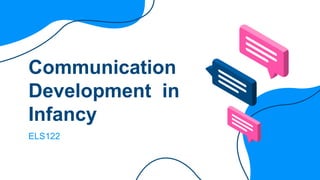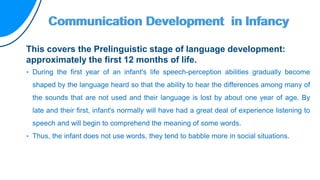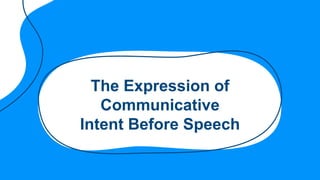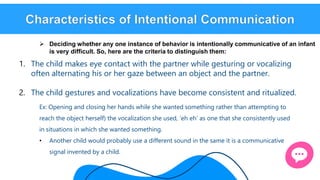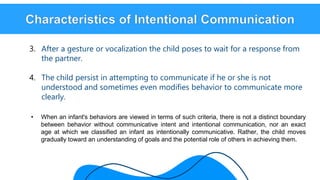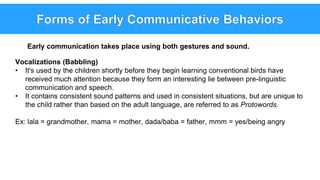The document discusses language development in infancy from birth to 12 months. During this prelinguistic stage, infants develop the ability to comprehend speech and begin to communicate intentionally through gestures and vocalizations before using words. Their speech perception abilities become tuned to the sounds of their native language. Caregiver interactions like baby talk, labeling objects, and responsive conversations influence infants' early communication development. Joint attention to objects and turn-taking interactions help infants understand communication is possible.
